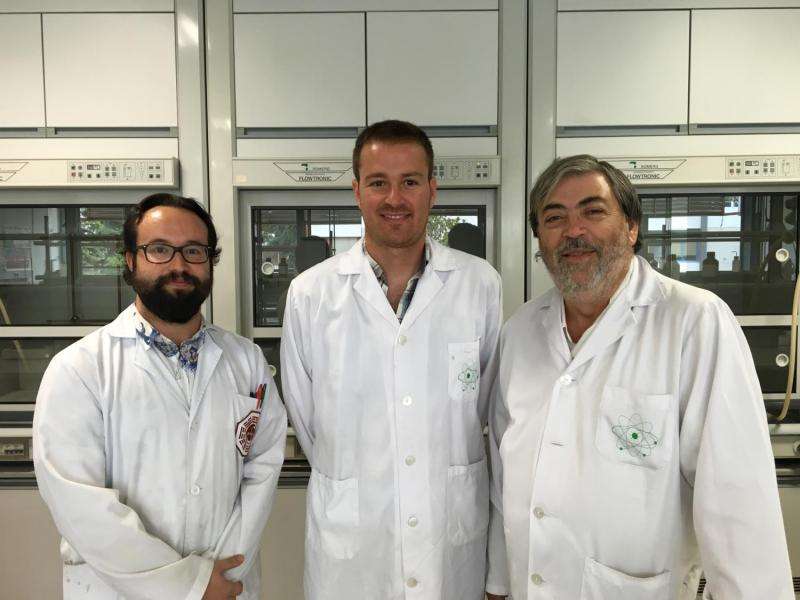Researchers introduce metallic ions within a DNA molecule, which will have many uses in biotechnology and biomedicine

Researchers from the University of Granada have proven for the first time that introducing slight chemical modifications to DNA molecules may allow the incorporation of metallic ions while maintaining the double-stranded structure and molecular recognition properties for other DNA molecules, enzymes, proteins, etc.
This breakthrough may allow the use of hybrid metal-DNA molecules for applications in the fields of biotechnology and biomedicine, given that the DNA structure remains practically unaltered and the metallic ions offer new properties to DNA molecules, including fluorescence, conductivity, magnetism or catalytic properties.
The research, published in Angewandte Chemie, has been conducted in the department of Inorganic Chemistry at the UGR.
The formation of these metal-DNA hybrids has been achieved carrying out slight chemical modifications in some of the DNA molecules' components—in particular, replacing adenine units with 7-deazaadenine units, which maintains their auto-recognition properties and facilitates the incorporation of metallic ions.
The research team from the UGR has transformed Watson-Crick bondings into similar bondings with silver metallic ions. This creates hybrid, highly stable DNA molecules capable of holding metallic ions in specific controlled positions within the DNA molecules.
As a result, for the first time, researchers can obtain big DNA molecules that keep their base complementarity, and whose metallic ions are distributed along the whole DNA molecule.
As professor Miguel A. Galindo Cuesta explains, "Until now, the international scientific community had only managed to introduce a small amount of metallic ions in some sections of the DNA structure using sophisticated chemical alterations that made it lose its natural properties, thus limiting possible applications."
The research team is currently expanding this strategy in collaboration with Javier Martínez from the Centre for Genomics and Oncological Research (GENyO), in order to prepare metal-DNA, nanometric systems with well-defined structures by using enzymatic DNA replication methods. The goal is to develop metal-DNA hybrids with potential biotechnological applications aimed at medicine and nanotechnology.
More information: Noelia Santamaría-Díaz et al. Highly Stable Double-Stranded DNA Containing Sequential Silver(I)-Mediated 7-Deazaadenine/Thymine Watson-Crick Base Pairs, Angewandte Chemie International Edition (2016). DOI: 10.1002/anie.201600924
Journal information: Angewandte Chemie , Angewandte Chemie International Edition
Provided by University of Granada




















